Хаас за Русия
Ромен Грожан:
After two very strong races to start the season, China proved to be a difficult weekend. While not the outcome you would’ve liked, was there a silver lining in that it helped keep the team grounded and forced everyone to dig even deeper to find solutions?
It was a difficult weekend for us and certainly not the outcome we had wanted. It still feels like it was a negative weekend, but in the near future, I’m sure we’ll see positives from it because it’s in the tough situations you learn the most. Hopefully, we can learn what happened. If anything was wrong with the car, what can we do better? What can we do differently? How do we react in a better way if we find ourselves in a similar situation? I think it’s one of those things you have to face as a new team, but I’m sure we’re going to react very well, as we have done so far every time.
When the car is difficult to drive, what are some of the things you do behind the wheel to get the best out of the car?
You have a few tools you can use in the car to change and fine-tune things like the aero balance. But when you’re not very happy with your car and the setup’s not behaving the way it should be, it’s very difficult in a very competitive world to recover.
Your experience was one of the many reasons Haas F1 Team wanted you, as you’re able to provide strong feedback on what the car is doing. Obviously, you had to do a lot of work inside the car at China, but what kind of work did you have to do outside the car in an attempt to make it better?
Formula One is a sport where you’re on your own in the car, but there are a lot of people behind you, from mechanics in the garage and the engineers setting up the car, through to the team owner and our sponsor, Haas Automation. We spend a lot of time debriefing and trying to find the best solutions for any problems we have. It’s something I very much like. It’s very interesting trying to find the best setup whenever you have issues or problems. Experience helps in those situations. Sometimes it’s not quite everything you need, but it helps you to find the problems or the solutions.
Tire management was crucial at China, as the degradation rate was high. Now we go to the other end of the spectrum in Russia, where the track’s smooth surface means tires tend to last longer. Can you explain how you had to manage your tires in China compared to what you’ll be able to do with your tires in Russia?
China is one of those tracks where it’s completely front-limited. The front-left tire suffers the most from the circuit. Russia is a very different one. It’s going to be more in line with Bahrain, so that’s going to be great. I hope we get the car back to where we want it and the better the setup, the easier it is to manage your tires.
The Sochi Autodrom has hosted only two grand prix. How consistent was the track from 2014 to 2015, and do you expect the track surface to behave similarly to what you experienced last year?
The first year on a new track is always tricky because there is a lot of oil coming from the new tarmac. After a year it gets better. I think Russia will be much more in line with 2015 than 2014, and that should be a bit better for us.
What is your favorite section of the Sochi Autodrom and why?
I like turn three. It’s a very high-speed corner. I went a bit too fast there last year, but it’s a fun place. I think the corners flow into each other quite nicely. It’s a good track to drive.
Explain a lap around the Sochi Autodrom.
There’s a very long straight line to start, followed by big braking into a right-hand side corner, taken in third or fourth gear. Then you have the famous turn three, which is flat out in qualifying. Then you go into turn four – you can carry quite good speed into it. The next few corners are very similar. They flow nicely and you enjoy some good speed in the car. Then you go on the backstraight, again with very tricky braking. Then the last section of the track is much slower, in particular the last two corners. The pit entry is also a bit tricky. The finish line is straight at the last corner, so depending if you’re on a qualifying lap or a racing lap, each one is different.
The Sochi Autodrom runs around the Olympic Village, as Sochi hosted the 2014 Winter Olympics. Do you follow the Olympics when they take place? Do you have a preference for either the Winter or Summer Olympics, and is there a specific event you like to watch?
I do follow the Olympics. My grandfather competed twice in the Olympic Games as a skier. The Olympics are something very important to my family. It’s always a pleasure to see where the flame is and sharing in that spirit. Hopefully, we’ll have a good race in Sochi.
Естебан Гутиерес: China marked your first completed race in 2016. How was it to finally be able to run a full race distance, especially after the adversity you faced with the car on Friday that only allowed you four laps?
It was a very big relief to finally do a lot of consecutive laps. I was enjoying the car and the race so much that I could have continued for another 50 laps, probably. It was quite a tricky situation by not being able to practice on Friday and having the wet session on Saturday morning. Basically, we didn’t have many laps under our belts and it was quite a challenge to arrive into qualifying directly without any preparation, but still having to do proper laps. I think we managed it pretty well as a team.
When the car is difficult to drive, what are some of the things you do behind the wheel to get the best out of the car?
You can influence the car with your driving style. You just have to adapt. If I have an understeering car, I do a certain driving style and the other way around if I have an oversteering car. We have a lot of tools too, as you can see on the steering wheel with all the buttons we have. We have some tools there at our fingertips where can try and fix it.
Tire management was crucial at China, as the degradation rate was high. Now we go to the other end of the spectrum in Russia, where the track’s smooth surface means tires tend to last longer. Can you explain how you had to manage your tires in China compared to what you’ll be able to do with your tires in Russia?
It’s quite different because in China, the main limitation was the front axle, and the front left tire was very sensitive. Russia is totally the opposite. It’s actually the rear tires that are the limitation, and at the same time, it’s a very low degradation track. So, the focus will be totally different, and it will allow us to have a bit more flexibility on strategy. I think our car has been pretty reasonable in tire degradation, so we can look forward to a positive weekend in Russia.
The first corner of the first lap in every race seems chaotic. How do you balance seizing opportunity to advance your position with taking care of your racecar so that it doesn’t get damaged?
It’s very important to get away from the crashes. In China into turns one and two, I had to avoid many pieces flying and cars crashing into each other. Obviously, it’s not ideal because by the time you try to avoid something in front, you also lose some positions from the back. I think it’s also important that from the start into turn one you have already made some positions by doing a good start. We’ve managed to do that in the last two grand prix. I plan to keep improving the start in order to get better and better to always be in a very good position into turn one and the next few corners.
This year marks your first full Formula One season since 2014. In 2015, you spent a lot of time on the simulator and observing at races in the role of reserve driver at Ferrari. How do you take what you learned in the simulator and apply it to your time in the car, particularly this weekend at Sochi?
The most important thing is that last year I was able to experiment a lot with my driving style in the simulator, and that gave me a pretty good knowledge of where I wanted to be and also develop different driving styles in order to adapt to different circumstances. I take every opportunity I can to be in the simulator. It helps in the development of the car’s setup, but also for myself. It gives me a wider selection of driving styles for me to adapt to any circumstance.
What is your favorite section of the Sochi Autodrom and why?
I love the first sector. It’s a nice, big braking into turn one, then you have the long turn three which is flat out. Then you have a series of medium-speed corners which are also quite fun.
Explain a lap around the Sochi Autodrom.
You arrive into turn one – it’s very big braking, quite a fairly long straight. Then you go out from turn one and arrive into turn three, which is a very fast, high-speed corner usually flat out. You arrive into turn four – it’s a medium-speed corner, quite important to get brake balance with the proper settings as you come from turn three which has a lot of lateral load. Next corner is turn five, which is a 90-degree corner. It’s a fourth-gear corner, and you can use all the curb available. Then you have an off-banking corner, so the track is going away from the apex to the exit of the corner, and this puts a bit of trickiness into the traction of the car. You have some medium-speed corners before the backstraight, which is not really a backstraight because it has a few corners which are part of the straight. The next corner is a hairpin. You arrive on the braking with a lot of lateral, and this requires a very different brake balance because it’s quite a big braking with a lot of cornering, which is a little bit like Bahrain. Then you exit the very slow-speed corner with a lot of lateral trying to prepare for the next corner, which is off-banking again, followed by a left-hander that is also off-banking. There’s a small straight before the last two corners, which are both 90 degrees. It’s important to have the tires up to temperature because you need the traction. It’s a track that is pretty stop-and-go. It requires a very different setup to what we had in China.
The Sochi Autodrom runs around the Olympic Village, as Sochi hosted the 2014 Winter Olympics. Do you follow the Olympics when they take place? Do you have a preference for either the Winter or Summer Olympics, and is there a specific event you like to watch?
I quite like the Winter Olympics, especially the skiing and bobsled. It’s always interesting to be in an area or a place where very hard competition happened. I appreciate athletes who maximize their full performance, and Sochi is one of those venues where we saw that take place.
Гюнтер Щайнер: After two very strong races to start the season, China proved to be a difficult weekend. While not the outcome you would’ve liked, was there a silver lining in that it helped keep the team grounded and forced everyone to dig even deeper to find solutions?
I think at some point we always knew we’d have a setback, and it came in our third race. We’ll just try again in Russia to get it right and end up where we should be.
Grosjean’s experience was one of the many reasons Haas F1 Team hired him. During a weekend like what the team experienced in China, how valuable was his feedback in finding ways to improve the car?
Romain’s feedback was very valuable, as always. We just couldn’t get the car to do what we wanted it to do. We had a problem with Esteban’s car, so he went out very little on Friday, which was part of our overall problem. We cannot make mistakes like that over the entire weekend. Not even Romain can catch up if we are not using our time as efficiently as possible.
When Romain noted something was not right, we went back to our original (front) wing – our proven wing. With a rookie driver, he may have said we need to check something. Romain knew it wasn’t right and he knew we didn’t have enough time to experiment with it, so we needed to go back to something we knew.
For the first time this season, Gutierrez was able to get in a full race at China, allowing Haas F1 Team to have both cars running at the finish. How important was that achievement for Gutierrez, but also for the team, as they had to manage two cars at the same time for an entire race?
The silver lining is we finished with two cars, which was a first for us. It wasn’t as successful as we wanted it to be, position-wise. We had seven pit stops total with the two drivers and they all worked well. We gained a lot of confidence in our pit stops, but we learned that managing two cars during a race is a lot more difficult that managing one. Now we are better prepared to take two cars to the finish, as we should.
You’re a new team with only three races under its belt. If there was a way you could arrive at a venue more prepared, what would it be?
As a new team, I would want an opportunity to test a few more days than the other teams. Give the new teams a freebie with three or more days of testing to get to know the car better, to get the team working better together so you can avoid the small mistakes you make early on that sometimes have big consequences. It’s wishful thinking, but knowing what I know now would have helped avoid the problems we had in China.
Would testing be about trying out various parts and pieces on the car, or more about getting the team more time to familiarize themselves with the car?
It’s more about the team working together and getting to know the car better than trying to invent something new. If you have one new piece of equipment, you have very little time during the weekend to get the team together and know what to look for and really jell together. It’s not about going faster. It’s about not making mistakes so you don’t go slower. In general, it would be nice to have a few more days of testing.
Would you like Haas F1 Team to take part in the Pirelli tire test that will help develop the 2017 tire?
Unfortunately, we don’t have a 2015 car. All we have is a 2016 car, so we cannot do it. But it wouldn’t be something we would jump on because we’d rather concentrate on what we have now. We still have a lot to learn with this car.
We’ve had three grand prix so far this year and rain has been a part of two of them, at least in the days leading up to the race. While rain is an unwelcome sight at the racetrack, has the experience of running in the rain during practice at Australia and China benefited the team in that it’s one less new experience for them to encounter?
I don’t think it matters one way or the other. The quantity of rain is always different. For sure you always learn, but I’d rather learn on dry conditions because there’s so much more you can take away. With wet conditions, you never have a standard wet setup. Dry is usually pretty standard and you can use it all the time.
The first turn of the first lap of a grand prix is both exciting and chaotic. But in your role of team principal, how nerve-wracking is that moment, when one wrong move by someone else can ruin a weekend’s worth of work?
There’s definitely tension. You just wait for whatever happens and then determine what to do next. Once the first half of lap one is over, it’s like half of the race is over because you know whether you’re in a pretty good place or not.
The Sochi Autodrom runs around the Olympic Village, as Sochi hosted the 2014 Winter Olympics. Do you follow the Olympics when they take place? Do you have a preference for either the Winter or Summer Olympics, and is there a specific event you like to watch?
Coming from the mountains, I follow the winter games more closely. I’d say downhill skiing is what I follow most.


















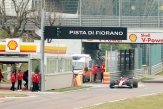
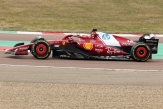
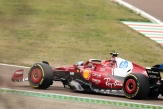
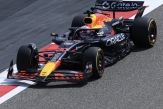
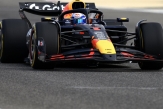
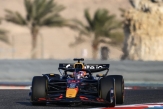

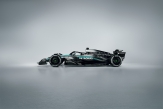
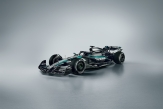


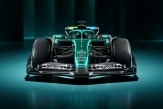
.jpg)
.jpg)
.jpg)

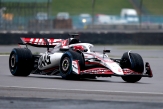

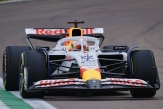
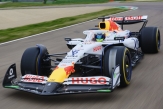



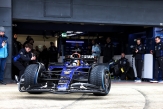
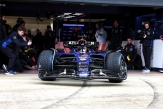
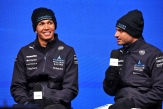

02/12/2025 от Огнян Тенчев (drJeckyll), няма коментари